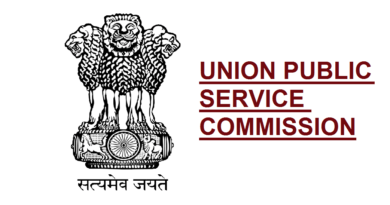State Health Index
Context:
NITI Aayog releases fourth edition of State Health Index
About State Health Index:
- The State Health Index is an annual tool to assess the performance of states and UTs. It is being compiled and published since 2017.
- The index is part of a report commissioned by the NITI Aayog, the World Bank, and the Union Health and Family Welfare Ministry.
- The index has been calculated as a weighted average of all the indicators in each state and union territory for a base year(2018-19) and a reference year (2019-20).
- The index is a weighted composite score incorporating 24 indicators covering key aspects of health performance. The indicators are categorized into three domains
- It includes parameters such as neonatal mortality rate, under-5 mortality rate, the sex ratio at birth.
- It includes parameters such as institutional deliveries, average occupancy of senior officers in key posts earmarked for health.
- The reports aim to nudge states/UTs towards building robust health systems and improving service delivery.
- The states are classified into three categories (Larger States, Smaller States and UTs). In this round, all the states and UTs participated except West Bengal, and the UT of Ladakh was not included due to the non-availability of data.
- It consists of the proportion of shortfall in health care providers to what is recommended, functional medical facilities, birth and death registration and tuberculosis treatment success rate.
The Findings of State Health Index
- Larger States

- Smaller States

- UTs

Mechanism
A robust and acceptable mechanism is used for measuring performance. Data is collected online through a portal maintained by NITI on agreed indicators. The data is then validated through an independent validation agency selected through a transparent bidding process. The validated data sheets are shared with the states for verification, followed by video conferences with the states for resolving any disagreements or disputes. The final sheets thus settled are shared with the states, and after agreement, the data is finalized and used for analysis and report-writing.
‘States are beginning to take cognizance of indices such as the State Health Index and use them in their policymaking and resource allocation. This report is an example of both competitive and cooperative federalism,’
The index is being compiled and published since 2017. The reports aim to nudge states/UTs towards building robust health systems and improving service delivery.
The importance of this annual tool is reemphasized by MoHFW’s decision to link the index to incentives under National Health Mission. This has been instrumental in shifting the focus from budget spending and inputs to outputs and outcomes.
Significance of the Index:
- Policymaking:
- States use it in their policy making and resource allocation.
- This report is an example of both competitive and cooperative federalism.
- Healthy Competition:
- The index encourages healthy competition and cross-learning among States and UTs.
- The aim is to nudge states/UTs towards building robust health systems and improving service delivery.
- Helpful in Achieving SDGs:
- The exercise is expected to help drive state and union territories’ efforts towards the achievement of health-related Sustainable Development Goals (SDGs) including those related to Universal Health Coverage (UHC) and other health outcomes.
- Role in National Health Mission:
- The importance of this annual tool is reemphasized by MoHFW’s decision to link the index to incentives under the National Health Mission.
- States use it in their policy making and resource allocation.
Limitations of the Index:
- Not Covered Critical Areas:
- Some critical areas such as infectious diseases, noncommunicable diseases (NCDs), mental health, governance, and financial risk protection are not fully captured in the Health Index due to non-availability of acceptable quality of data on an annual basis.
- Limited Data:
- For several indicators, the data is limited to service delivery in public facilities due to paucity and uneven availability of private sector data on health services.
- For outcome indicators, such as Neonatal Mortality Rate, Under-five Mortality Rate, Maternal Mortality Ratio and Sex Ratio at Birth, data are available only for Larger States.
- For several indicators, the data is limited to service delivery in public facilities due to paucity and uneven availability of private sector data on health services.
- Without any Field Verification:
- For several indicators, Health Management Information System (HMIS) data and programme data were used without any field verification due to the lack of feasibility of conducting independent field surveys.
Related Initiatives
- National Health Mission (NHM)
- Ayushman Bharat Pradhan Mantri Jan Arogya Yojana (AB PM-JAY)
- Pradhan Mantri Swasthya Suraksha Yojana (PMSSY)
- Pradhan Mantri Bhartiya Janaushadhi Pariyojana.
- Ayushman Bharat Digital Mission
Source: PIB
You can find many articles on HEALTH(part of GS II) in our website. Go through these articles share with your friends and post your views in comment section.



